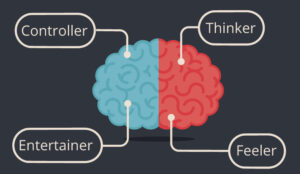While tagging customer interactions might seem like a small part of your operations, it’s actually a vital component of running a productive contact centre. Consistently tagging your customer support interactions in any chat software — should be a top priority.
Why You Should Properly Tag Customer Conversations
Every customer interaction is an opportunity to learn more about your customers, understand how and why they use your product, and gain insight into how to keep them longterm.
It’s also a chance to proactively uncover any issues and figure out how to fix them. When chat conversations are properly tagged, it’s easier for you to leverage interactions to mine insights.
Here’s an example: customers who use the premium version of your product have repeatedly mentioned downgrading or cancelling during the last few months in their chat conversations.
If those conversations get tagged properly, you’ll be able to recognize that trend much faster. This puts you in a position to take action. If these conversations aren’t tagged, you could see higher customer churn than you expected and be left wondering why.
Finding issues faster matters. Today’s customers won’t hang around long if they keep experiencing the same issue — 71% say they would switch to a company’s competitor due to multiple bad customer service experiences.
Creating a Tagging Strategy
The team has assembled a thorough guide to the mechanics of creating tags and using them within your customer chats.
But before you start on those steps, take the time to think about your tagging strategy overall and ask yourself the following questions:
- Should my agents be manually tagging conversations or should I look for an automated solution?
- Should we use a flat tagging taxonomy or a hierarchical structure?
- What will I do with the insights I gather and how can I take action on them?
Manual Tagging vs. Automated Tagging
There are a few problems with manually tagging customer interactions. First, it can be inaccurate. Your agents are fielding a lot of interactions, and it’s easy to tag one interaction incorrectly. This will hurt your efforts to see patterns and trends in your customer calls and identify problems quickly.
Second, manual tagging, even though it takes less than a minute per conversation, can actually be costly to your business.
Those seconds add up across all of your agents and all of their conversations every day, taking time away from serving other customers. This ends up hurting your metrics.
Automated tagging with AI picks up on the context and sentiment of a customer interaction so that tags are always accurately applied, fueling your customer research with the right data.
Because agents aren’t spending time thinking about choosing right tag, they can move more quickly to the next interaction, so you reach your customers faster.
Flat Tagging Taxonomies vs. Hierarchical Tagging
A tagging taxonomy is the structure you choose to organize your tags. A flat taxonomy is simpler to use but less robust as it contains more general categories. A hierarchical structure has several layers of organization and allows more precise tracking and analysis of your tags.
Both types of tagging have their time and place. For a customer service centre that gets hundreds of customer interactions per month, a flat taxonomy often keeps things simple for a smaller team.
But for a growing support centre dealing with thousands of interactions each month, a hierarchical structure will allow you to more precisely tag customer feedback and analyze it more thoroughly.
With either tagging taxonomy, you’ll want to keep a tight grip on the reins of how tags are added. Letting agents add new tags during conversations can muddy customer feedback and make it harder to gain insights.
What to Do With the Insights You Get From Tagging
Proper tagging brings issues and opportunities to the forefront faster. But if tagging helps you uncover a product issue that needs to be corrected, it can be hard to make it a priority with the product team since they’re often overwhelmed with requests.
The best way to move higher up the product team’s to-do list and get the attention of your leadership is to present the issue as a business problem. When you show that a customer issue is costing your company money, you’re more likely to get it addressed faster.
When you’re making a business case for a product change, be prepared with hard numbers, such as:
- Number of customers the issue has affected
- Number and amount of lost deals because of the issue
- Number of customers who have churned and amount of revenue lost because of the issue
Hard numbers have a way of getting attention from the right people. When you can assemble data easily thanks to your tags, you’re one step closer to getting things fixed.
How Automated Feedback Analysis Helps You Manage Conversation Tags
When you’re using a tool like Zendesk to manage customer conversations across both sales and support, you’re creating a lot of data and insights to manage. And as you scale, creating more products and supporting more customers, it’s going to become hard to handle in a hurry.
Besides volume, the context of how customers talk about their problems matters. Often they won’t pick up on the many different ways a customer describes a problem.
Customer AI uncovers actionable customer insights by analyzing conversations from every ticket, survey, and digital interaction. Through AI-driven customer feedback and sentiment analysis, you find out important information about your customers and your products — no matter what words they use — with far less effort.
By actively monitoring customer sentiment and proactively seeking out ways to fix issues, you’ll see fewer repeated issues and less churn. You’ll deliver the right customer experience and make your own job easier at the same time.
Author: Guest Author
Published On: 21st Oct 2022 - Last modified: 25th Oct 2022
Read more about - Guest Blogs, Playvox




































